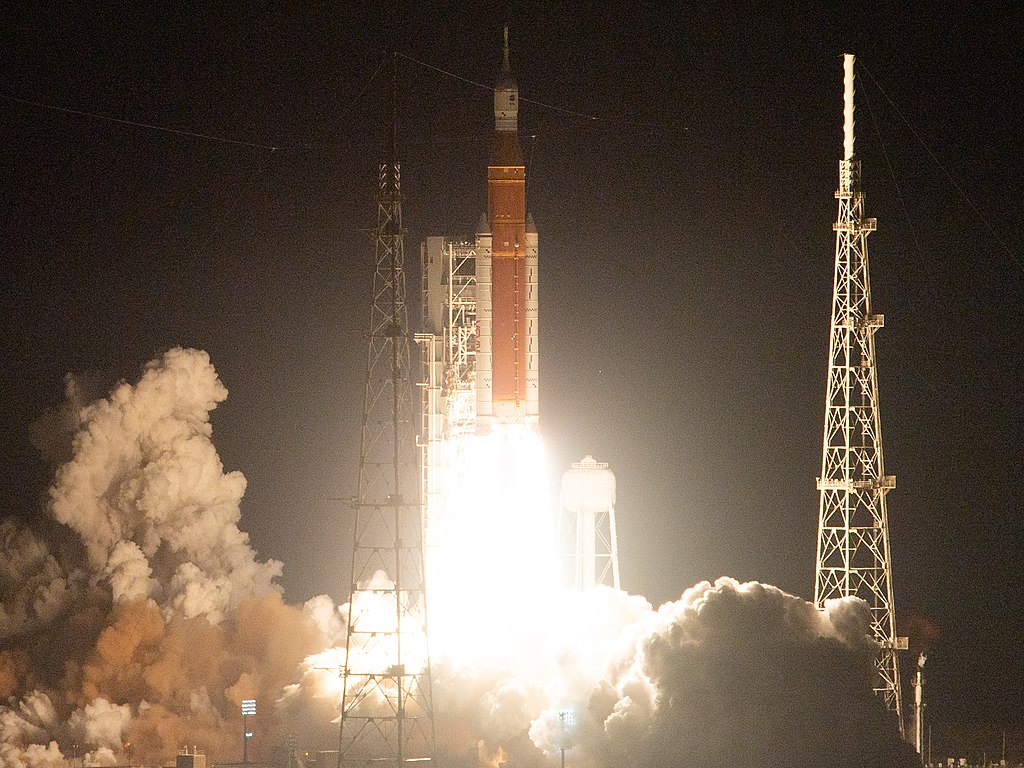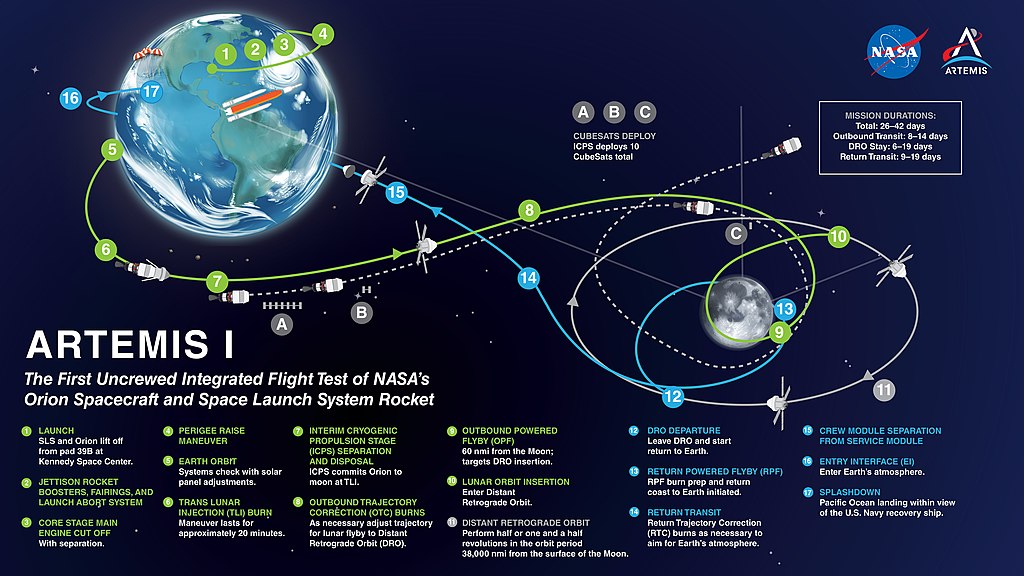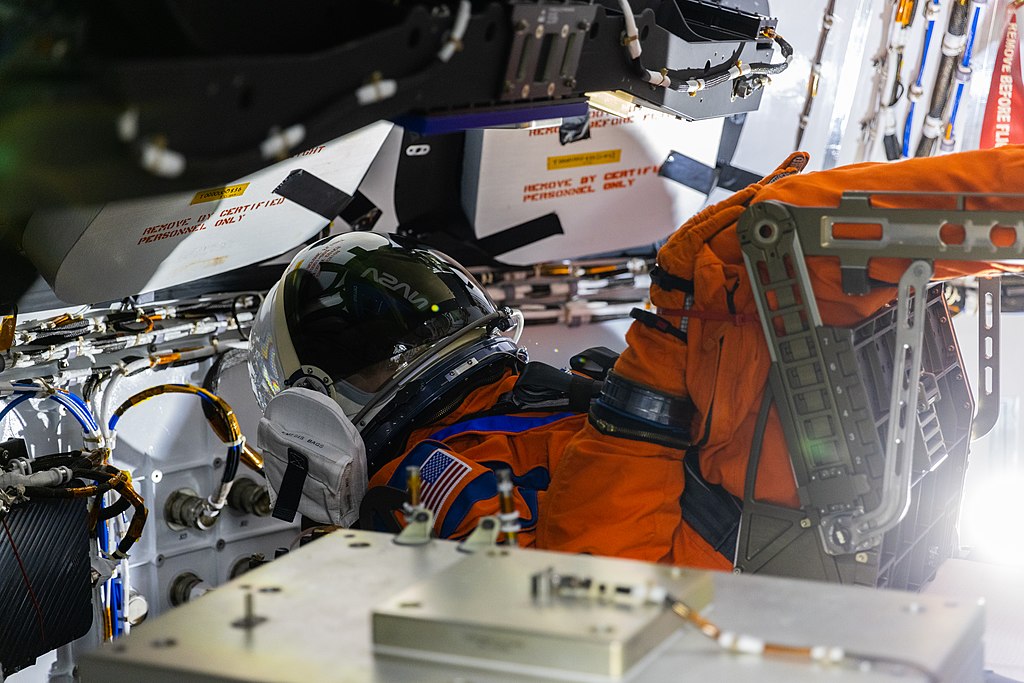Kennedy Space Center, Florida —(Map)
Yesterday, NASA’s massive SLS rocket blasted off, sending the spacecraft Orion on its way to the moon. It’s the first flight of NASA’s Artemis project, which will later send astronauts to the moon. The current flight is testing the safety of several systems.
After many delays, NASA’s Artemis I mission finally blasted into space early Wednesday morning. There was no one on board, but the flight is an important test run for future missions, which will carry astronauts.

(Source: NASA/Joel Kowsky [Public domain], via Wikimedia Commons.)
Artemis is a NASA project designed to send humans to the moon again. The US is the only country that has sent men to the moon, but the last time that happened was in 1972. This time, NASA wants the crew to include the first woman and the first person of color.
Sending people to the moon is a huge and complicated project, and there are many things that could go wrong. NASA is using the Artemis I mission to test its systems for safety.
Wednesday’s launch comes after many delays for the project. Several launches planned for earlier this year had to be canceled because of equipment problems and hurricanes. There were small problems yesterday, but in the end, the SLS rocket took off, filling the sky around it with light.
😕
This image has not been loaded because of your cookie choices. To view the content, you can accept 'Non-necessary' cookies.
Wednesday’s launch comes after many delays for the project. Several launches planned for earlier this year had to be canceled because of equipment problems and hurricanes. There were small problems yesterday, but in the end, the SLS rocket took off, filling the sky around it with light.
The rocket, which is taller than the Statue of Liberty, is one of the things that NASA is testing. It’s known as the SLS (Space Launch System) rocket, and it’s the most powerful rocket system in the world. NASA is planning on using the SLS for future missions into deep space.
The SLS rocket was carrying the Orion spacecraft, where astronauts would normally ride. After flying 2,485 miles (4,000 kilometers) into space, the SLS rocket separated, and Orion continued on toward the moon. After it reaches the moon, Orion will orbit it for several days before heading back to Earth.

(Source: NASA [Public domain], via Wikimedia Commons.)
There are no astronauts on this flight, but NASA sent some substitutes. One of them is a human-sized model, called a “manikin”. The manikin has sensors inside it to help NASA see how the flight might affect humans. NASA has named the manikin “Commander Moonikin Campos”. It’s sitting in the commander’s seat inside Orion.
One concern for astronauts in outer space is being exposed to radiation, which can be harmful. Two of the manikin’s sensors will record radiation levels. There are also two torsos (upper bodies) strapped into seats on Orion. These are also helping test for radiation.

(Source: NASA/Frank Michaux [Public domain], via Wikimedia Commons.)
Perhaps the biggest test for the Artemis I flight will come on December 11. That’s when Orion is expected to splash back down. As it falls through the Earth’s atmosphere, it will have to hold up under temperatures as high as 5,000º Fahrenheit (2,760º Celsius).
If the Artemis I flight goes well, NASA plans to send two astronauts to orbit the moon on the Artemis II flight, perhaps in 2024. Finally, NASA plans for the Artemis III flight to actually land astronauts on the moon. Though that’s planned for 2025, it’s likely to be delayed.
Did You Know…?
Orion will travel farther away from Earth than any other spacecraft that has left the planet and returned. In all, Orion will travel roughly 1.3 million miles (2.1 million kilometers).
😕
This map has not been loaded because of your cookie choices. To view the content, you can accept 'Non-necessary' cookies.
